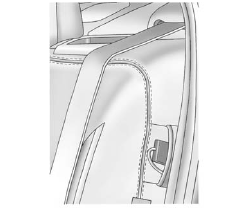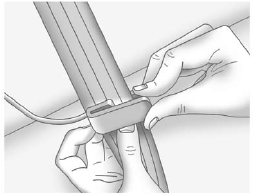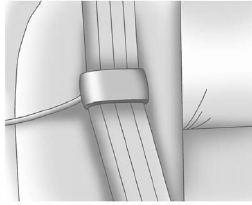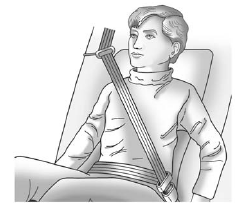Rear Safety Belt Comfort Guides
This vehicle may have rear shoulder belt comfort guides. If not, they are available through your dealer. The guides may provide added safety belt comfort for older children who have outgrown booster seats and for some adults. When installed and properly adjusted, the comfort guide positions the belt away from the neck and head.
There is one guide for each outside passenger position in the rear seat.
Here is how to install a comfort guide to the safety belt:

1. Remove the guide from its storage pocket on the side of the seat.

2. Place the guide over the belt, and insert the two edges of the belt into the slots of the guide.

3. Be sure that the belt is not twisted and it lies flat. The elastic cord must be under the belt and the guide on top.
WARNING!
A safety belt that is not properly
worn may not provide the
protection needed in a crash. The
person wearing the belt could be
seriously injured. The shoulder
belt should go over the shoulder
and across the chest. These parts
of the body are best able to take
belt restraining forces.

4. Buckle, position, and release the safety belt as described previously in this section. Make sure the shoulder portion of the belt is on the shoulder and not falling off of it. The belt should be close to, but not contacting, the neck.
See also:
Keys
CAUTION:
Leaving children in a vehicle with the
ignition key is dangerous for many
reasons. They could operate the power
windows or other controls or even make
the vehicle move. The children or ...
Safety Belt Use During Pregnancy
Safety belts work for everyone, including pregnant
women. Like all occupants, they are more likely to be
seriously injured if they do not wear safety belts.
A pregnant woman should wear a lap-s ...
Lumbar Adjustment
Lumbar Adjustment
To adjust the lumbar support,
if available:
• Press and hold the front or rear
of the control to increase or
decrease lumbar support.
• Press and hold the top or botto ...


